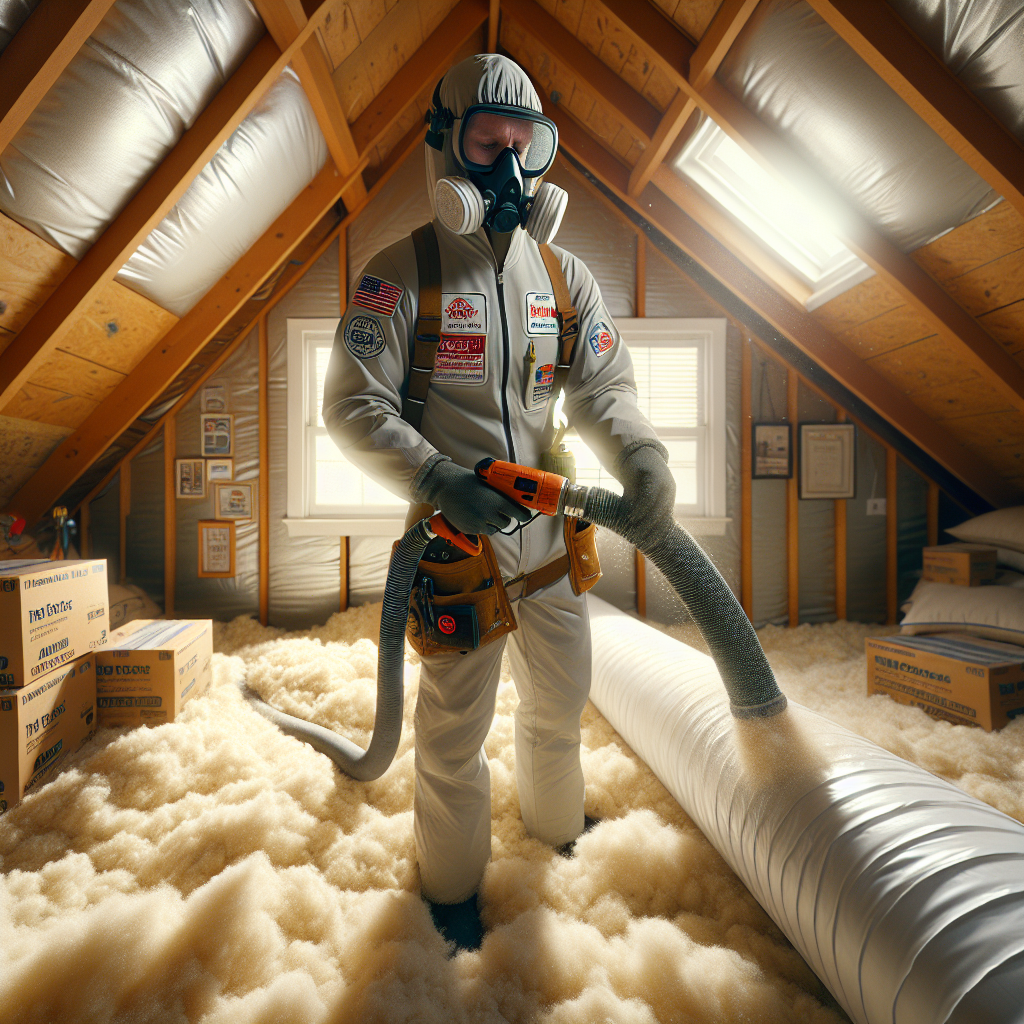-
Table of Contents
<meta name="description" content="Discover the R49 Blown In Insulation Revolutio with Texas Insulation Solutions. Houston’s trusted experts in energy-efficient attic insulation, spray foam, radiant barriers, and more.” />
Upgrade your home’s energy efficiency with R49 Blown In Insulation Revolution! Experience superior comfort and lower utility bills today. Get started now!
R49 Blown In Insulation Revolutio: Transforming Houston Homes with Energy Efficiency

In the sweltering heat and unpredictable weather of Houston, maintaining a comfortable and energy-efficient home is more important than ever. The R49 Blown In Insulation Revolutio is reshaping how homeowners approach attic insulation, offering superior thermal protection and significant energy savings. At Texas Insulation Solutions, we bring this revolutionary insulation technology directly to Houston residents, combining local expertise with professional installation to maximize your home’s comfort and efficiency.
Why R49 Blown In Insulation Revolutio Matters
R-value measures insulation’s ability to resist heat flow, and an R49 rating represents one of the highest levels of thermal resistance available for blown-in insulation. In Houston’s hot and humid climate, this level of insulation is critical to reducing energy consumption and maintaining indoor comfort.
According to the U.S. Department of Energy, upgrading attic insulation to R49 can reduce heating and cooling costs by up to 20%, a significant saving for Houston homeowners facing rising energy bills. Additionally, proper insulation helps prevent moisture buildup, reducing the risk of mold and improving indoor air quality — a vital health consideration in humid environments.
Beyond energy savings, R49 blown-in insulation also enhances soundproofing and fire resistance, making it a smart investment for long-term home protection and value.
Key Benefits of R49 Blown In Insulation
- Superior Energy Efficiency: Keeps your home cooler in summer and warmer in winter, reducing HVAC strain.
- Cost Savings: Lower monthly utility bills thanks to improved thermal performance.
- Moisture and Mold Resistance: Helps maintain a dry attic environment, protecting your home’s structure.
- Sound Dampening: Minimizes outside noise for a quieter living space.
- Quick and Clean Installation: Blown-in application minimizes mess and disruption.
- Environmentally Friendly: Many blown-in materials use recycled content and reduce carbon footprint.
Why Choose Texas Insulation Solutions
As a Houston-based company, Texas Insulation Solutions understands the unique challenges posed by the Gulf Coast climate. Our local expertise ensures that every insulation project is tailored to meet Houston’s specific weather patterns and building codes.
We pride ourselves on delivering:
- Energy Savings & Comfort: Our R49 blown-in insulation solutions are designed to optimize your home’s energy efficiency, keeping you comfortable year-round.
- Clean, Fast, Professional Installation: Our certified technicians use state-of-the-art equipment to install insulation quickly and with minimal disruption to your daily life.
- Multiple Insulation Types: From blown-in cellulose and fiberglass to spray foam and radiant barriers, we offer a full range of insulation options tailored to Houston’s climate and your home’s needs.
With hundreds of satisfied customers across Houston, our reputation for quality workmanship and dependable service is unmatched.
Related Services
- Blown-In Insulation
- Spray Foam Insulation
- Radiant Barrier Installation
- Insulation Removal & Replacement
- Garage Insulation
- Rodent-Proofing and Sealing
FAQ
- How much does attic insulation cost in Houston?
Costs vary depending on attic size and insulation type, but typical R49 blown-in insulation projects range from $1,500 to $3,500. Texas Insulation Solutions offers free inspections and customized quotes to fit your budget.
- Do I need insulation replacement or just an upgrade?
If your current insulation is damaged, compressed, or below R30, a replacement or upgrade to R49 can significantly improve energy efficiency and comfort in Houston’s climate.
- Is blown-in insulation good for Houston’s climate?
Absolutely. Blown-in insulation provides excellent coverage and air sealing, which is essential for combating Houston’s heat and humidity while preventing moisture issues.
- How long does attic insulation take to install?
Most residential attic insulation installations are completed within a day, minimizing disruption and allowing you to enjoy improved comfort immediately.
- What areas around Houston do you serve?
Texas Insulation Solutions proudly serves Houston and surrounding neighborhoods including Katy, Sugar Land, The Woodlands, Pearland, Cypress, and more.
Get in Touch with Texas Insulation Solutions
📍 Address: 9707 Braewick Dr, Houston, TX 77096
📞 Call: (832) 396-1116
📧 Email: service@texasinsulationsolution.com
🌐 Website: https://texasinsulationsolution.com
🔗 Facebook: Facebook Profile
🔗 Instagram: @texas_insulation_solutions
🔗 Yelp: Texas Insulation on Yelp
🔗 Nextdoor:</strong




